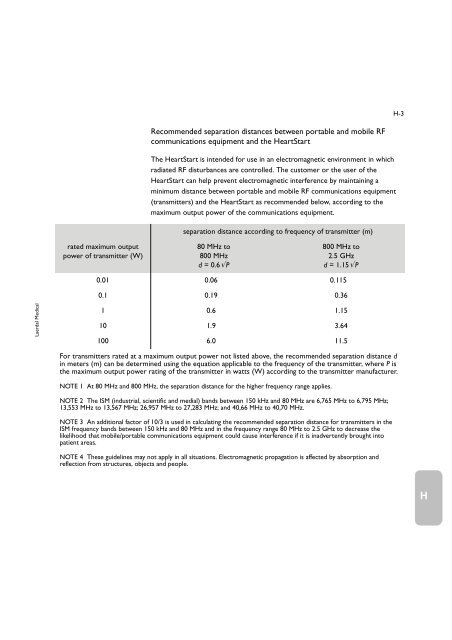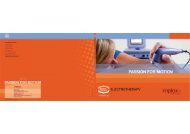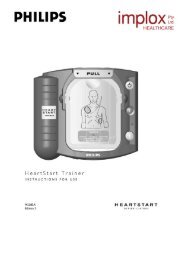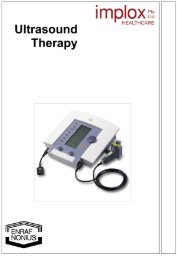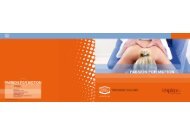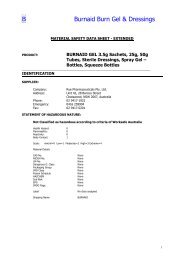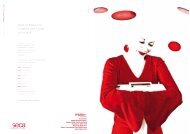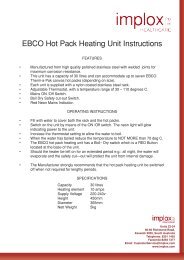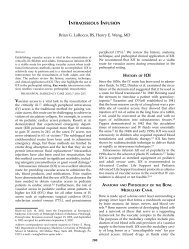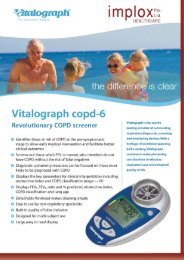Directions for Use - Implox
Directions for Use - Implox
Directions for Use - Implox
You also want an ePaper? Increase the reach of your titles
YUMPU automatically turns print PDFs into web optimized ePapers that Google loves.
H-3<br />
Recommended separation distances between portable and mobile RF<br />
communications equipment and the HeartStart<br />
The HeartStart is intended <strong>for</strong> use in an electromagnetic environment in which<br />
radiated RF disturbances are controlled. The customer or the user of the<br />
HeartStart can help prevent electromagnetic interference by maintaining a<br />
minimum distance between portable and mobile RF communications equipment<br />
(transmitters) and the HeartStart as recommended below, according to the<br />
maximum output power of the communications equipment.<br />
separation distance according to frequency of transmitter (m)<br />
rated maximum output<br />
power of transmitter (W)<br />
80 MHz to<br />
800 MHz<br />
d = 0.6√ P<br />
800 MHz to<br />
2.5 GHz<br />
d = 1.15√ P<br />
0.01 0.06 0.115<br />
0.1 0.19 0.36<br />
Laerdal Medical<br />
1 0.6 1.15<br />
10 1.9 3.64<br />
100 6.0 11.5<br />
For transmitters rated at a maximum output power not listed above, the recommended separation distance d<br />
in meters (m) can be determined using the equation applicable to the frequency of the transmitter, where P is<br />
the maximum output power rating of the transmitter in watts (W) according to the transmitter manufacturer.<br />
NOTE 1 At 80 MHz and 800 MHz, the separation distance <strong>for</strong> the higher frequency range applies.<br />
NOTE 2 The ISM (industrial, scientific and medial) bands between 150 kHz and 80 MHz are 6,765 MHz to 6,795 MHz;<br />
13,553 MHz to 13,567 MHz; 26,957 MHz to 27,283 MHz; and 40,66 MHz to 40,70 MHz.<br />
NOTE 3 An additional factor of 10/3 is used in calculating the recommended separation distance <strong>for</strong> transmitters in the<br />
ISM frequency bands between 150 kHz and 80 MHz and in the frequency range 80 MHz to 2.5 GHz to decrease the<br />
likelihood that mobile/portable communications equipment could cause interference if it is inadvertently brought into<br />
patient areas.<br />
NOTE 4 These guidelines may not apply in all situations. Electromagnetic propagation is affected by absorption and<br />
reflection from structures, objects and people.<br />
H


